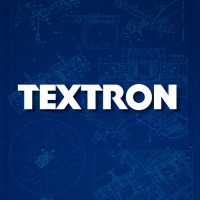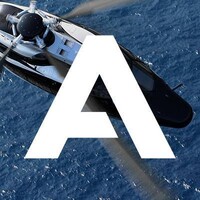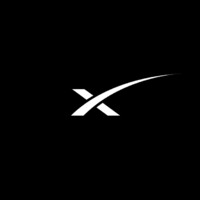Company Cyber Security Posture
NANA
NA Company Details
NA
NA
NA
NA
NA
NA
Scan still pending
NA
NA
Between 200 and 800
This score is AI-generated and less favored by cyber insurers, who prefer the TPRM score.
 NA Global Score
NA Global Score.png)

Company Scoring based on AI Models
| Model Name | Date | Description | Current Score Difference | Score |
|---|---|---|---|---|
| AVERAGE-Industry | 03-12-2025 | This score represents the average cybersecurity rating of companies already scanned within the same industry. It provides a benchmark to compare an individual company's security posture against its industry peers. | N/A | Between 200 and 800 |
Company Cyber Security News & History
| Entity | Type | Severity | Impact | Seen | Url ID | Details | View |
|---|
Company Subsidiaries

NA
Access Data Using Our API

Get company history
.png)
NA Cyber Security News
South Korea’s KAI Achieves First Flight of MCH Prototype
Korea Aerospace Industries (KAI) successfully conducted the first test flight of its Mine Countermeasure Helicopter (MCH)
Update: KAI, Hanwha win deals to build more KF-21 fighters and engines
Both contracts represent follow-on deals. In June 2024, KAI was awarded a KRW1.96 trillion contract to produce 20 KF-21 aircraft and Hanwha ...
North Korean Hackers Target Energy and Aerospace Industries with New MISTPEN Malware
"UNC2970 targets victims under the guise of job openings, masquerading as a recruiter for prominent companies," it said in a new analysis, ...
Google details UNC2970 North Korea-linked espionage hackers targeting US energy, aerospace sectors
These hackers exploit authentic job description content to target individuals working in critical infrastructure sectors in the U.S. They pose ...
ENKI WhiteHat aims to redefine cybersecurity by thinking like attacker
ENKI WhiteHat is one of Korea's top three offensive security service providers in Korea. Established in September 2016, the company has been a ...
South Korea seeks growing arms deals with Iraq
South Korea seeks growing arms · Iraq · Amr Salem; April 24 · Iraq · Amr Salem · April 24, 2025; 1093 · 2025; 1093; 3 min · 3 min. South Korea seeks growing ...
Will a Lee Jae-myung presidency save Korea's defense industry?
Audio report: written by reporters, read by AI. President Lee Jae-myung visits the Agency for Defense Development headquarters in Daejeon on ...
Iran-linked group aims malware at aerospace industry through fake job recruiters
Suspected Iranian hackers impersonated recruiters on LinkedIn to target the aerospace industry in a new espionage campaign, researchers have ...
Strengthening South Korea’s national security by adopting the cloud
To improve its national security, South Korea must improve its ICT infrastructure. Knowing this, the government has begun to move towards cloud ...

NA Similar Companies

Blue Origin
We are building a road to space for the benefit of Earth, humanity’s blue origin. Our team is focused on radically reducing the cost of access to space and harnessing its vast resources while mobilizing future generations to realize this mission. Blue Origin builds reusable rocket engines, launch ve

Textron
Textron Inc. is a multi-industry company that leverages its global network of aircraft, defense, industrial and finance businesses to provide customers with innovative solutions and services. Textron is known around the world for its powerful brands such as Bell, Cessna, Beechcraft, Pipistrel, Jacob

Bombardier
Bombardier is a global leader in aviation, focused on designing, manufacturing, and servicing the world's most exceptional business jets. Bombardier’s Challenger and Global aircraft families are renowned for their cutting-edge innovation, cabin design, performance, and reliability. Bombardier has a

Airbus Helicopters
Airbus is a leader in designing, manufacturing and delivering aerospace products, services and solutions to customers on a worldwide scale. Airbus strives to provide the most efficient helicopter solutions to its customers who serve, protect, save lives and safely carry passengers in demanding envi

Dassault Aviation
Dassault Aviation is a French aerospace company that shapes the future by designing and building military aircraft, business jets and space systems. Leader on the New Generation Fighter developed within the joint European program FCAS (Future Combat Air System) Designer and manufacturer of the Raf

SpaceX
SpaceX designs, manufactures and launches the world’s most advanced rockets and spacecraft. The company was founded in 2002 by Elon Musk to revolutionize space transportation, with the ultimate goal of making life multiplanetary. SpaceX has gained worldwide attention for a series of historic mil

Frequently Asked Questions
Explore insights on cybersecurity incidents, risk posture, and Rankiteo's assessments.
NA CyberSecurity History Information
How many cyber incidents has NA faced?
Total Incidents: According to Rankiteo, NA has faced 0 incidents in the past.
What types of cybersecurity incidents have occurred at NA?
Incident Types: The types of cybersecurity incidents that have occurred include .
Additional Questions
What Do We Measure?
















Every week, Rankiteo analyzes billions of signals to give organizations a sharper, faster view of emerging risks. With deeper, more actionable intelligence at their fingertips, security teams can outpace threat actors, respond instantly to Zero-Day attacks, and dramatically shrink their risk exposure window.
These are some of the factors we use to calculate the overall score:
Identify exposed access points, detect misconfigured SSL certificates, and uncover vulnerabilities across the network infrastructure.
Gain visibility into the software components used within an organization to detect vulnerabilities, manage risk, and ensure supply chain security.
Monitor and manage all IT assets and their configurations to ensure accurate, real-time visibility across the company's technology environment.
Leverage real-time insights on active threats, malware campaigns, and emerging vulnerabilities to proactively defend against evolving cyberattacks.




